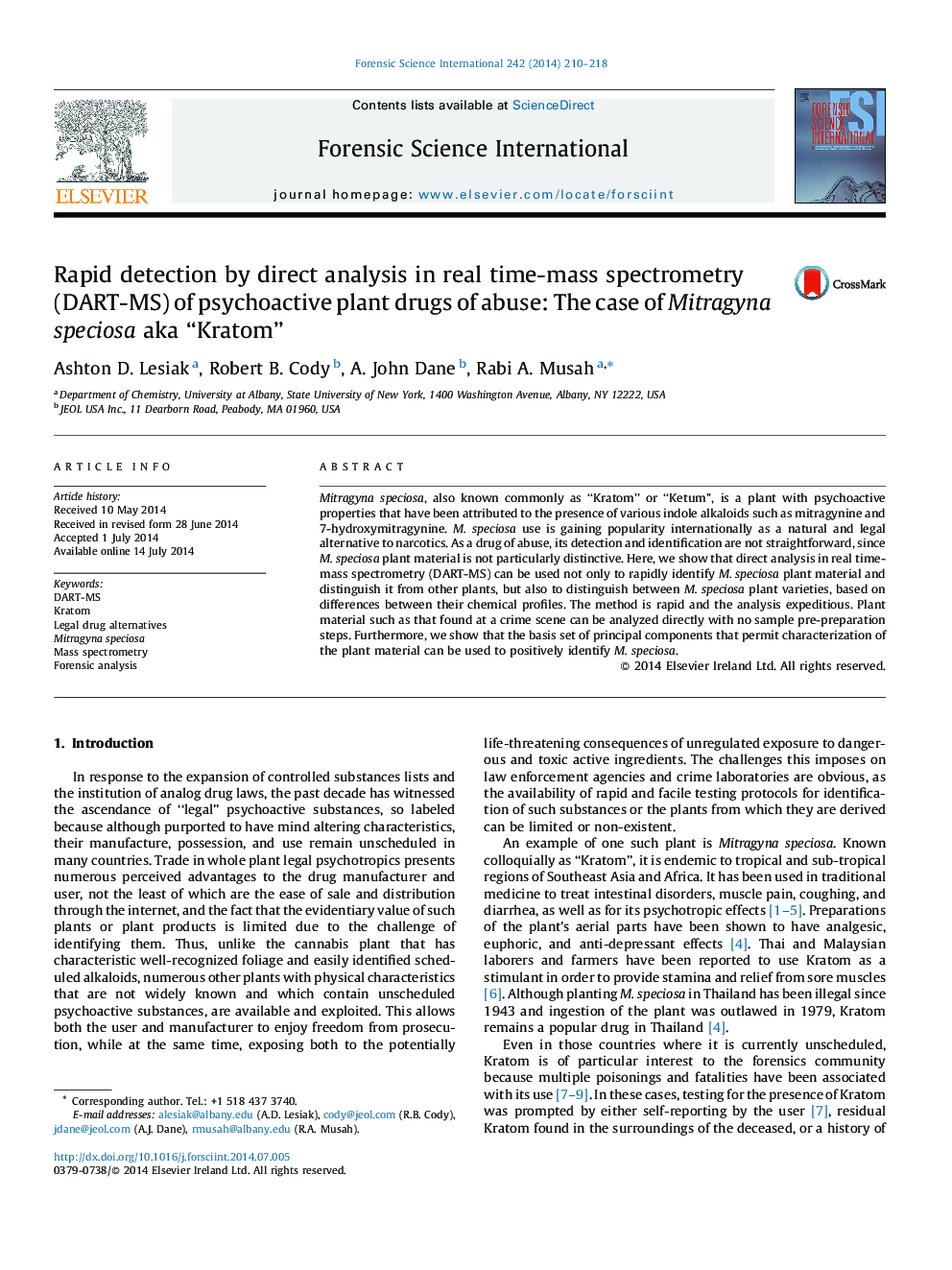| کد مقاله | کد نشریه | سال انتشار | مقاله انگلیسی | نسخه تمام متن |
|---|---|---|---|---|
| 95469 | 160432 | 2014 | 9 صفحه PDF | دانلود رایگان |

• A rapid analysis method for detection of psychoactive plants of abuse is outlined.
• Kratom was identified from the presence of characteristic psychoactive alkaloids.
• Two varieties of Kratom were differentiated using linear discriminant analysis.
Mitragyna speciosa, also known commonly as “Kratom” or “Ketum”, is a plant with psychoactive properties that have been attributed to the presence of various indole alkaloids such as mitragynine and 7-hydroxymitragynine. M. speciosa use is gaining popularity internationally as a natural and legal alternative to narcotics. As a drug of abuse, its detection and identification are not straightforward, since M. speciosa plant material is not particularly distinctive. Here, we show that direct analysis in real time-mass spectrometry (DART-MS) can be used not only to rapidly identify M. speciosa plant material and distinguish it from other plants, but also to distinguish between M. speciosa plant varieties, based on differences between their chemical profiles. The method is rapid and the analysis expeditious. Plant material such as that found at a crime scene can be analyzed directly with no sample pre-preparation steps. Furthermore, we show that the basis set of principal components that permit characterization of the plant material can be used to positively identify M. speciosa.
Figure optionsDownload high-quality image (255 K)Download as PowerPoint slide
Journal: Forensic Science International - Volume 242, September 2014, Pages 210–218